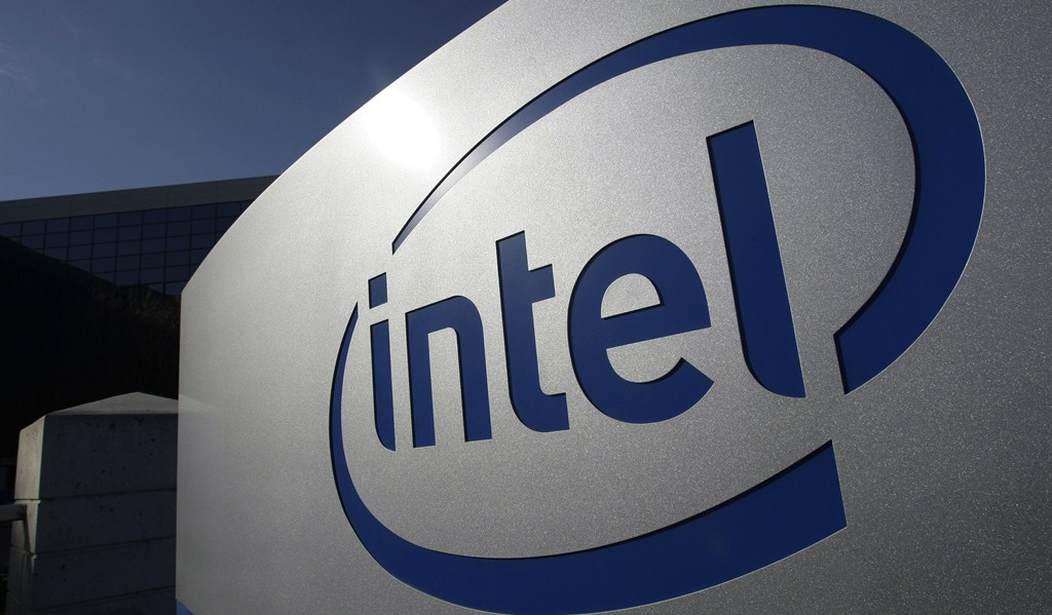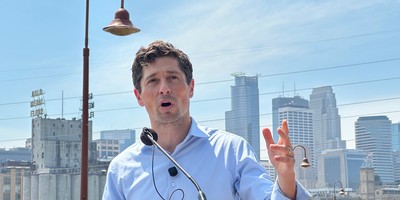Editor's Note: This column is co-authored by Chris Nicholson and Matt Cole.
As Intel goes, so does the CHIPS Act’s sole hope for American semiconductor independence. After a disastrous earnings report where it halted its dividend, cut fab construction spending by $10 billion, and fired 15% of its workforce, the Commerce Department has decided to hold off on giving Intel $20 billion in CHIPS funds. Electronics Weekly notes the move mirrors DEI-imposed delays we outlined in The Hill. That’s the tip of the iceberg: Intel and the U.S. both bet on ESG delivering chips, and both have lost.
ESG is part of why Intel’s costly Arizona fab expansions are there to begin with. The Commerce Department strongly suggested CHIPS applicants use 100% renewable energy. So Intel went westward, following the sun to the Sonoran Desert and Chandler, Arizona. But while the desert gets plenty of sun, it lacks a key ingredient for chipmaking: moisture.
Chipmaking uses lots of water to clean and cool silicon wafers. Taiwan’s fabs are in tropical jungles; water’s far more expensive in Arizona. Recycling and wastewater treatment facilities to help stretch limited supplies cost almost as much as ASML’s hotly-contested lithography machines, which use lasers to inscribe patterns of advanced chips onto those wafers.
Intel may have even worked with the Department to embed ESG in the chip value chain. Soon after the CHIPS Act passed, a top executive bragged about “How to embed ESG values into the computer chip value chain” for the World Economic Forum, writing Intel’s “investing significantly in innovative sustainability solutions, including abatement of emissions, water reclamation and powering manufacturing facilities with renewable electricity.” Those innovations helped its construction costs balloon over 50% to $16 billion per fab.
Intel has chosen to lead in ESG, at substantial expense, because it couldn’t lead in making or designing chips. It’s long fashioned itself the industry leader in ESG and DEI—in 2016, it implemented goals like 45% “diverse hiring” and “to retain diverse employees at a higher rate than the rest of the population.” Like many underperforming companies, ESG was its easiest competitive differentiator, with its promise of long-term outperformance.
Recommended
But eventually, the long-term has happened. Yes, Intel has led the industry in ESG for a long time—and where has that led Intel?
Its competitors make more profit because they focus more on it. TSMC ran afoul of CHIPS instructions to rely on union labor when it flew in hundreds of engineers from Taiwan to get its Arizona fabs back on schedule. But it worked: they’re now achieving chip yields comparable to its fabs in Taiwan, which is fortunate since Intel now has to outsource even more manufacturing to it. Samsung apparently asked South Korea’s government to object to onerous CHIPS burdens like childcare and profit-sharing. Despite preliminary announcements, it hasn’t received any CHIPS funds; it’s now further delaying its Texas fabs.
Having failed the shareholder, Intel comes hat-in-hand to the taxpayer; it’s the citizen’s turn to fund its experiments in ESG. The customer’s, too. At Intel’s urging, Secretary Raimondo is pressuring companies like Amazon and Nvidia to use it for manufacturing, which CEO Jensen Huang calls inferior on cost and quality; a demo chip on Intel’s most advanced process just failed to get Broadcom’s validation.
Can ESG deliver chips? There’s still no proof. It’s currently delaying a heralded memory fab in New York. Endangered bats migrate from their caves half the year to live in trees Micron needs to cut down. It’s missing its bat-free window because environmental review of its wetlands impact is dragging on. If politicians get their way and Micron’s employees unionize and cause any delay, it could miss its next logging window, too. Meanwhile, China’s amassed over 200 times the shipbuilding capacity of the U.S. and churns out warships as it eyes Taiwan.
Sometimes you can’t have it all. Wildlife habitats, diverse hiring, solar power, cost, speed, chips—pick two, basically. Ezra Klein interviewed Secretary Raimondo about this very problem, calling her CHIPS approach “everything bagel liberalism.” When asked if Taiwanese chipmakers are well-positioned to create gender balance in U.S. construction, she simply said, “I consider it a fact that a more diverse work force is a more productive work force.” She was likely inspired by debunked McKinsey studies tying diversity to corporate performance; many federal agencies and companies still cite them as gospel.
This unfortunate episode illustrates the real cost of ESG: organizational focus. Prioritizing ESG makes organizations lose sight of their main goal, whether profit or national security, to pursue a secondary goal that’s often counterproductive. Putting ESG over profit is like benching your best player and starting your worst. The distraction begins with executive compensation—getting ESG bonuses is easy, beating financial targets is hard. Soon enough, everyone cares about what their boss cares about.
It becomes a polite fiction everyone has to share. Intel and the government live in a dream where costly ESG policies pay for themselves by increasing productivity. Measurable DEI data can look like performance improvements, if combined with flimsy premises like the McKinsey studies. The fiction becomes common wisdom, validated by groupthink, and reality itself must conform.
Now there’s $20 billion in CHIPS money, almost half the pot, waiting on Intel, itself slowed down by the ESG strings attached to that money. Perversely, as Intel fires more productive employees, its DEI officers can keep their jobs by pointing to the need to comply with DEI mandates to get the delayed funds. They’ll probably be the ones doing the firing; even in crisis, reality must bend. Intel’s scrapping its espresso machines, but ESG stays.
What makes a strong company? What makes a strong country? Neither can lose sight of their core focus, especially when the stakes are high. Strong organizations recognize when their strategies aren’t working and pivot. Intel and America still have a small window to do that by abandoning the fantasy that ESG helps them make chips.
Matt Cole is CEO of Strive Asset Management, an Ohio-based firm with over $1.6 billion in assets under management, where Chris Nicholson is SVP of research.























Join the conversation as a VIP Member